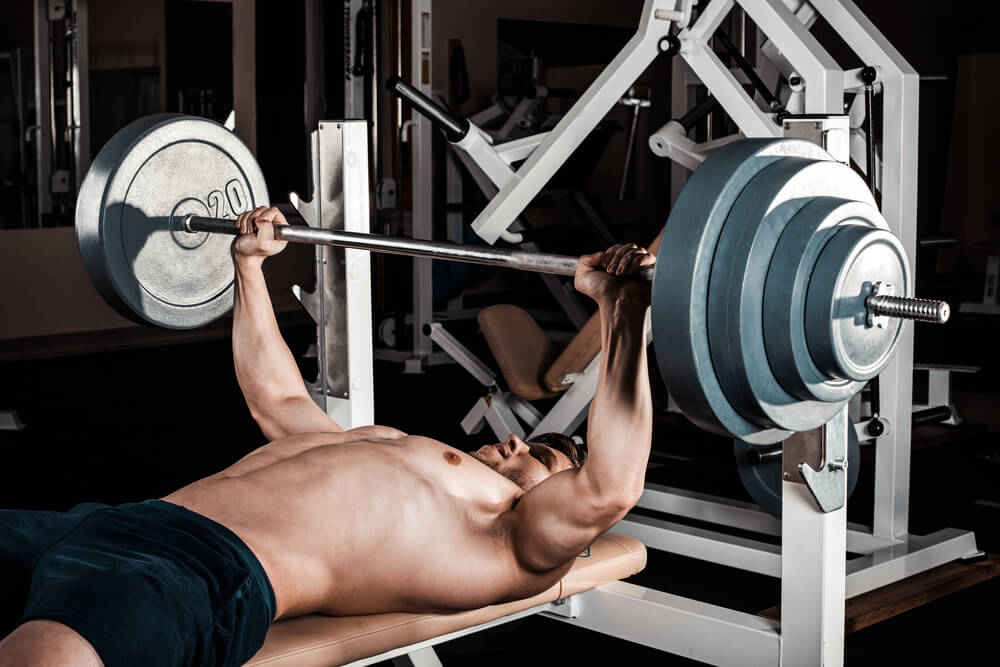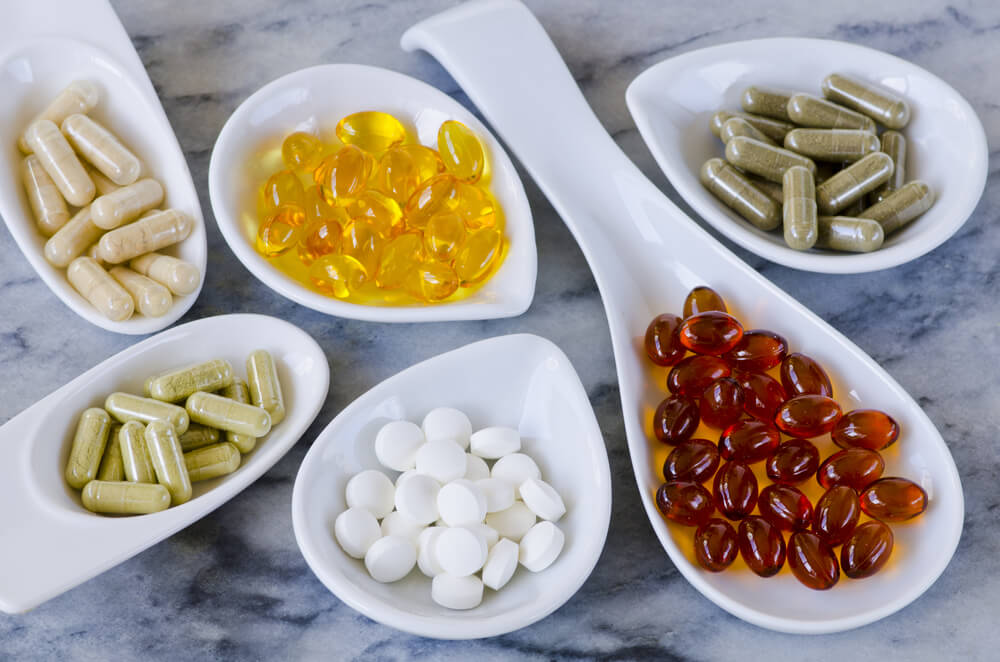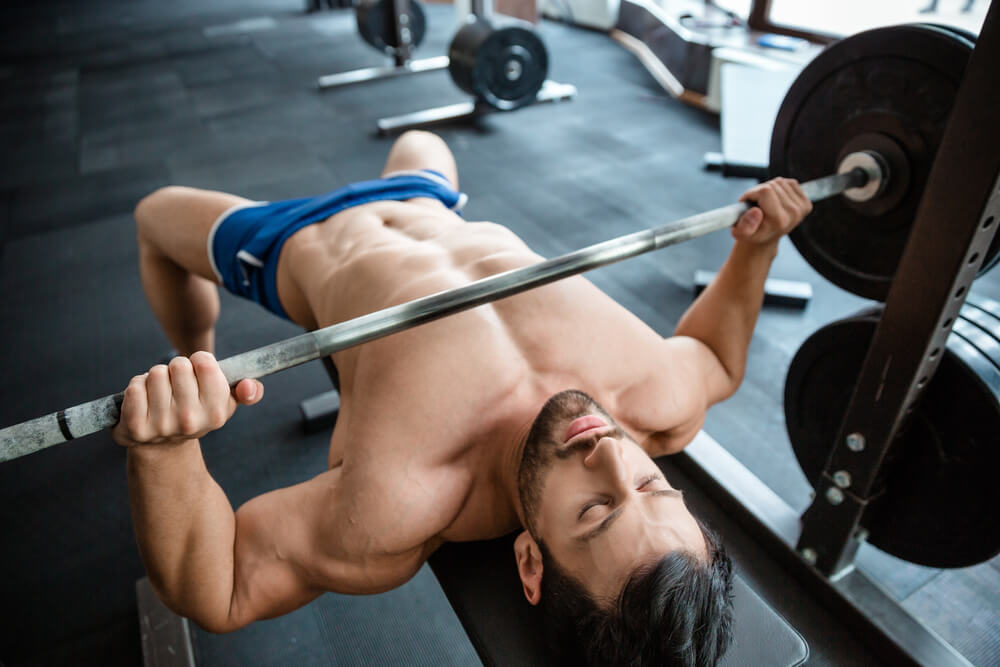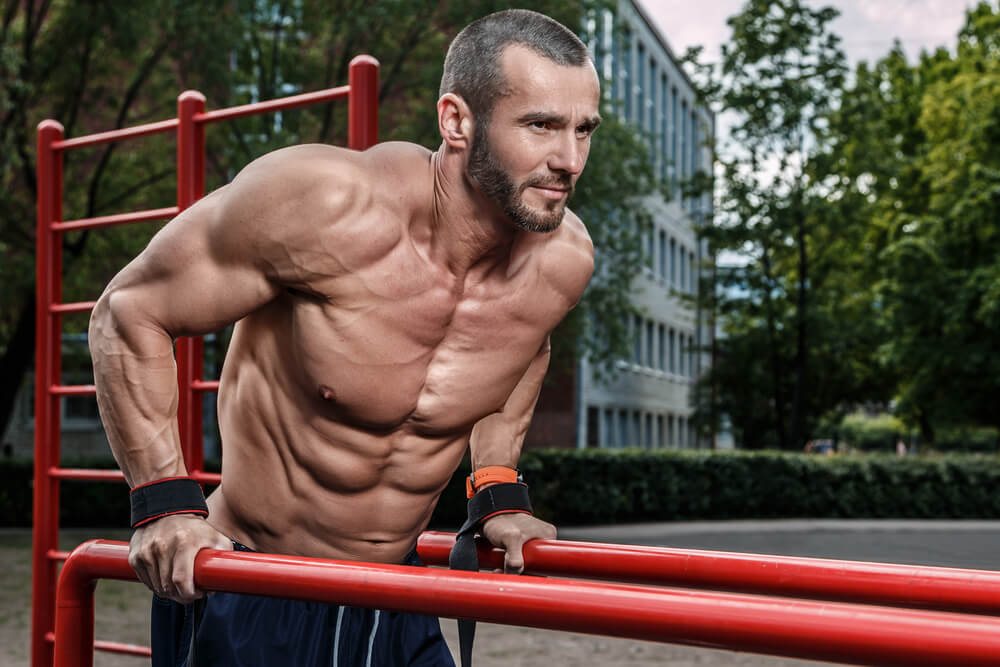
A strong chest instantly establishes power. You look at someone with a large, defined chest and it makes the rest of their upper body look dominating and strong. You also rarely see someone with a strong chest but weak arms, shoulders and a back. Here’s your insane chest workout…
Why?
Because a great chest helps with just about every other upper body lift you perform.
And don’t you want to be one of those guys with a strong, big chest?
Someone who puts on a t-shirt and it instantly clings to their pecs, not because it shrunk in the wash or because they bought it a size too small, but because they are just that well built?
It could very well be you. It doesn’t matter what kind of chest growth you have or haven’t experienced in the past. This workout will help you shred your pecs in every direction, setting you up for the best chest gains you’ve ever had.
Here’s how to build a massive chest…

Diet and Supplementation
If you have a body that stubbornly doesn’t want to build muscle that’s just part of your genetics. This usually is because you have such a fast burning metabolism you burn through all incoming protein before the body converts it into muscle. Chances are, this will begin to even out as you age.
But you want a bigger chest now, not five years from now.
So what can you do?
It’s all about adjusting your nutrition and supplementation.
First, make sure you’re bringing in enough protein to begin with. When you struggle to convert protein into muscle aim for around a gram of protein per pound you weigh (you may want to start yourself off lower and work your way up just so you don’t over saturate your body with protein right away).
However, don’t just focus on protein and that’s it.
You want to bring in carbs as well. With your fast-acting metabolism, your body will break down the carbs for energy, allowing more protein to sneak past and into the bloodstream for muscle building energy.
Make sure you’re taking a creatine supplement as well. Your body naturally produces creatine and uses it as fast twitch fiber energy. This is the energy you tap into when exploding up on the bench press. It does take time for the body to naturally produce more creatine, so adding it to your workout will allow you to squeeze out a few more reps, which helps in both strength and size development.
Also, add in BCAA supplements. Short for branched chain amino acid, BCAA helps improve your body’s ability to deliver protein to muscle tissue in need. This way, instead of the protein being immediately torched into energy your body can take more of it and deliver it to your chest (Healthline, 2018).
Some individuals are naturally gifted in having a larger chest and can build muscle faster. If you naturally have a faster metabolism you’ll need help and this supplementation will give you the added boost.
How To Have An Insane Chest Workout
Depending on who you ask, different people will give you different instructions on when to lift for your chest. Some will tell you to lift Monday, Wednesday, and Friday for your entire upper body.
Now, there are some benefits to this as you’re able to hit your body three times in a week, but there are some major drawbacks as well. First, unless you’re just hitting your chest, you’re going to be at the gym for hours to shred your chest and then hit the rest of your body.
And second, going every other day doesn’t give you the kind of rest you need to build muscle. If you lift and then are back hitting those muscles 48 hours later you will never be able to perform at the same level.
If the human body didn’t suffer a drop off don’t you think professional baseball pitchers would pitch every other day?
Instead, they pitch once every five days as this gives their body enough time to recover. You need to give your body time to recover as well.
Instead, you should target your chest directly once a week and spend the entire time at the gym focusing on your chest. This gives your body enough time to repair all the muscle tissue, which allows your body to rebuild larger. If you hit your chest every other day, your body hasn’t finished rebuilding, in which case you’ll just tear down an unfinished product, which hinders your gains.
Plus, it’s not like you are not touching on your chest the rest of the week. On back day and shoulder day you’ll touch on your chest. You’ll probably touch your chest when working your arms, and if you have the deadlift on leg day you’ll work your chest as well.
You see, you’re still going to work your chest the rest of the week. Hitting it once every five days to a week just ensures ample recovery time for massive size gains. (Livestrong, 2017)

Bench Press(es)
Yes, you can’t just hit your chest with the standard bench press or even incline bench press. You need to hit it three different ways.
Why?
Because your chest is actually made up of three different muscle groups. Whether looking in the mirror on yourself or looking at a bodybuilder’s image online, you’ll notice a straight line across the top of the pectoral muscle. This is where one of the splits happens. The bottom of the pectoral muscle has another split, although this is a bit more challenging to see.
If you want to get scientific with it, the main muscle of your pec is the pectoralis major.
This makes up the majority of your pec muscle and, when you perform a traditional bench press, it is the muscle group that is directly under the barbell.
Next, there is the pectoral fascia. This is the thin portion of muscle above the pectoralis major and is the area above the line of the pec you see. This area often goes underdeveloped because there are not a ton of upper body lifts that directly target the muscle, which is why it is so important for you to perform an incline bench press. When you raise the bench up and lift from this angle the barbell is lifted from directly above the pectoral fascia.
The third portion of the pectoral muscle is the pectoralis minor. This is a slender portion of the pec that is located under the pectoralis major. And, as you have probably guessed, when you toss the bench back into the decline position, it is the main muscle group you’ll target.
There is another portion of the upper body and chest that does go along with the three portions of your pectoral muscles. This is known as the serratus anterior muscle. If you feel along your rib cage where it meets the pec muscles, this small muscle is made up of the very bottom side of your pec and the upper rib area. You’ll hit this area with some of the other lifts but also with the three bench lifts.
To build mass you want to combine both heavyweight and lift reps. Due to this, you want to perform the chest press lifts in four to five sets. This gives you ample time to blast the chest and to tear the muscle fiber apart. You can aim for the 12, 10, 8, 6, 4 style, which gives you some basic structure to the lifts and the kind of weight you should be using but don’t get caught up in these numbers. Instead, you need to be lifting to failure on every set.
On your first set, shoot for 12. If you can squeeze out more don’t just stop. Keep putting it up until you fail. This means you used too light of a weight, so add on more for the next set. If you hit 10 and can do more, again pump out more until you can’t. After the first few weeks, you’ll identify what the best starting point is.
So never stop lifting until your body can’t put up any more reps and adjust the weight accordingly (WebMD, 2009).

Dumbbell Flyes
With the bench press lifts, you want to go as much weight as you can while still shooting for those target rep numbers.
With the dumbbell flye though it is a bit different. This is because you’re putting more weight onto your elbow. Your elbow is much easier to strain so you want to be mindful of any tenderness you might feel in the area. It is a solid lift though as it hits your entire pectoral region (all three major parts to the pecs).
When performing the lift try to avoid locking your elbows together as this will help reduce tension on the elbow.
Begin with your arms slightly bend and dumbbells lifted above your head (you can do this on a flat bench or an incline bench). Allow your arms to lower down so your elbows are at around your back level as if you are opening a pair of doors. You’ll really feel the stretch here, which is exactly what you want.
In order to pack on maximum size, you want to increase the stretch placed on your chest.
Increasing the stretch causes more fiber breakage, which gives your body more to repair and build up (it also burns more calories during the repair process).
With the dumbbell, flyes perform four sets of around six to eight reps.
Alternative to Barbells
Ideally, with the bench press lifts, you’ll have a barbell on hand.
This is because you can lift more on the barbell and you won’t put as much tension on your elbows.
However, if you have a home gym (or all the barbells are in use at your local gym) the dumbbells do have some benefits you can’t get from a barbell.
Yes, you won’t be able to lift as much, but you can increase the stretch placed on your chest.
A barbell can’t go any lower than the top of your chest.
However, with dumbbells, you can lower the weight to just under chest level. This adds a substantial amount of stretch to your chest, tears more muscle fiber and helps you build your chest out further (Mayo Clinic, 2015).

(Weighted) Chest Dips
The dip is a fantastic lift that works your chest and all you may need is your body weight.
At the dip station, you’ll want to do another four sets of six to eight reps each. When performing the dip keep your elbows in. If your elbows flare out more of the weight is disbursed to your triceps and shoulders. It also places unnecessary strain on your elbows.
Allow your body to go as far down as possible.
Remember, the stretch is good with building size.
Now, you may want to add weight to your chest dip. If you’re able to do more than eight reps of the chest dip on a single set you need to begin adding weight. Pushing out a dozen reps is fine when you want to add some definition, but it isn’t going to do much good for building size.
This is where the chain weight comes in.
If you’ve always wanted to add some chain weights to your workouts this is the time to do it. Add on a chain weight and perform the dip. Again, if you’re able to squeeze out more than eight reps keep adding the weight until you can’t. After a few weeks, you’ll know where to start off. It also helps to take some notes so you can track your progress and to have a number to shoot for and surpass each week (Rehab Research, State of Virginia).
Conclusion
With a combination of diet, supplementation, and lifting, you’ll be able to strengthen your chest and really pack on the size. By blasting your chest on chest day and giving yourself enough time to recover while you work the rest of your body, you’ll see results in no time. Keep with it and you’ll discover a new chest size you never thought possible.
-Terry Asher
Terry Asher
Latest posts by Terry Asher (see all)
- Better Family – Product Review Liquid Daily 2 oz - Dec 16, 2024
- Post-Workout Recovery: The Key to Optimal Performance - Nov 25, 2024
- Pre-Workout Supplements – Everything You Need To Know - Nov 18, 2024









[…] 28, 2018 Facebook Twitter Google+ Pinterest […]
He is very healthy and very hardworking
[…] post Insane Chest Workout For Your Gains appeared first on Gym […]
[…] post Insane Chest Workout For Your Gains appeared first on Gym […]
[…] push ups are a great way for you to add extra resistance and build more strength in your chest. The added resistance will force your entire body to work harder, which is a great way to target […]
[…] push ups are a great way for you to add extra resistance and build more strength in your chest. The added resistance will force your entire body to work harder, which is a great way to target […]
[…] push ups are a great way for you to add extra resistance and build more strength in your chest. The added resistance will force your entire body to work harder, which is a great way to target […]